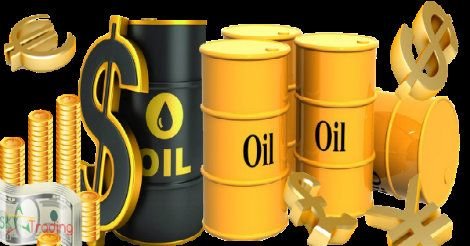Crude oil, the lifeblood of global energy markets, continues to hold significant influence over economies and industries worldwide. As of December 28, 2024, crude oil prices remain volatile, shaped by a complex interplay of geopolitical events, economic indicators, and market dynamics. This comprehensive analysis delves into the technical and fundamental aspects influencing crude oil prices, providing insights into their current state and future prospects.
Yearly Trends
Crude oil prices in 2024 have reflected a year of substantial challenges and fluctuations. Brent crude, trading at $73.05 per barrel, and West Texas Intermediate (WTI), at $69.62 per barrel, have faced headwinds from demand concerns, supply adjustments, and geopolitical uncertainties.
Key Events Shaping 2024 Prices
- Geopolitical Tensions:
- Prolonged conflicts in the Middle East and Eastern Europe have contributed to price volatility.
- Israeli airstrikes on Yemen’s Houthi rebels have raised fears of potential supply disruptions.
- Economic Factors:
- Persistent inflationary pressures and varying central bank policies have influenced global demand for crude.
- Slower-than-expected growth in China and India, key consumers of oil, has tempered demand.
- OPEC+ Decisions:
- OPEC+ has implemented production cuts to stabilize prices, while non-OPEC production has increased.
- Unplanned disruptions, such as maintenance delays and weather impacts, have periodically tightened supply.
Part 2: Technical Analysis
Technical analysis of crude oil prices examines chart patterns, indicators, and trends to predict future price movements.
1. Price Trends and Moving Averages
- 50-Day Moving Average: Brent and WTI prices remain below their 50-day moving averages, indicating short-term bearish momentum. Current levels for Brent and WTI are $75 and $71, respectively. These averages also reflect the effects of subdued trading volumes.
- 200-Day Moving Average: Both benchmarks are also below their 200-day moving averages, underscoring long-term bearish sentiment. Historically, breaches below these levels have led to prolonged price corrections.
2. Support and Resistance Levels
- Immediate Support:
- WTI: $68
- Brent: $70
- Immediate Resistance:
- WTI: $72
- Brent: $75
- Extended Resistance Zones:
- WTI: $78 (medium-term target)
- Brent: $80 (psychological barrier)
3. Relative Strength Index (RSI)
The RSI for both Brent and WTI hovers around 40, suggesting that the market is approaching oversold conditions but has not yet reached them. A dip below 30 could indicate stronger buying opportunities, while any reading above 50 might attract short-term speculative interest.
4. Bollinger Bands
Crude oil prices are nearing the lower Bollinger Band, signaling a possible short-term rebound. However, a decisive break below the band could indicate further bearish momentum. A widening of the bands may reflect heightened price volatility in the coming weeks.
5. Fibonacci Retracement Levels
Key retracement levels to monitor include:
- 23.6% Retracement:
- WTI: $70
- Brent: $72
- 38.2% Retracement:
- WTI: $68
- Brent: $70
- 50% Retracement: Significant mid-points of $65 for WTI and $68 for Brent could act as robust support zones if bearish trends persist.
Part 3: Fundamental Analysis
Fundamental analysis evaluates the broader economic, political, and market factors affecting crude oil prices.
1. Geopolitical Factors
- Middle East Tensions:
- Recent Israeli airstrikes on Yemen’s Houthi rebels have heightened fears of supply disruptions, given the region’s significance in global oil production.
- Ongoing conflicts in the Middle East often lead to speculative buying, driving prices higher in the short term. Unrest in the Strait of Hormuz could significantly impact shipping routes and global supply.
- Eastern Europe Conflict:
- The prolonged war in Eastern Europe has exacerbated energy supply concerns, particularly for European nations heavily reliant on oil imports. Sanctions on Russian exports have led to increased demand for alternative suppliers.
2. Supply and Demand Dynamics
- OPEC+ Production Decisions:
- Key OPEC+ members have postponed planned production increases, citing weaker demand and an oversupplied market. These decisions aim to balance the market and support prices. Additional production quotas for 2025 remain under discussion.
- Non-OPEC countries, such as the United States, have ramped up production, offsetting some of the effects of OPEC+ cuts.
- Global Demand:
- China, the world’s largest importer of crude oil, has shown signs of demand stagnation, with forecasts indicating a potential peak in consumption by 2027. Recent shifts toward domestic energy alternatives have accelerated this trend.
- India’s demand growth has slowed due to economic challenges and a weaker rupee, affecting its purchasing power.
- Emerging markets in Southeast Asia and Africa present growth opportunities, though their infrastructure development and financing remain critical factors.
3. Currency and Inflation Impact
- Strong U.S. Dollar:
- A stronger dollar makes crude oil more expensive for holders of other currencies, dampening demand. This inverse relationship has been evident in 2024, as dollar strength coincided with softer oil demand.
- Inflation Trends:
- Lower-than-expected U.S. inflation data has raised hopes of monetary policy easing, which could support economic growth and, by extension, oil demand. However, inflationary pressures in emerging economies have limited their capacity to import oil.
4. Technological and Industrial Trends
- Renewable Energy Shift:
- The global push toward renewable energy has raised questions about long-term oil demand. Nations like the U.S., China, and Germany are leading investments in renewables, reducing reliance on crude oil.
- Innovations in electric vehicles and alternative energy sources continue to challenge oil’s dominance in the energy mix. By 2030, EV penetration is expected to displace significant transportation fuel demand.
- Industrial Adaptation:
- Petrochemical industries remain dependent on crude oil derivatives. Advances in bioplastics and synthetic alternatives could impact this demand over time.
Comparative Analysis with Other Energy Sources
Crude Oil vs. Natural Gas
- Volatility: Natural gas prices have been more volatile, influenced by seasonal demand and supply shocks. Crude oil’s more stable supply chain gives it an edge in predictability.
- Demand Drivers: Crude oil’s versatility in transportation and industry offers broader applications than natural gas, which is primarily used for heating and electricity generation.
Crude Oil vs. Renewable Energy
- Growth Trajectory: Renewable energy sources, such as solar and wind, are gradually gaining market share. Crude oil retains its edge in reliability for industrial processes and heavy transportation.
- Cost Efficiency: Declining costs of renewable technologies could accelerate their adoption, challenging oil’s dominance.
Crude Oil vs. Coal
- Environmental Impact: Coal has faced a steeper decline in demand due to environmental concerns and regulatory pressures. Crude oil, while also subject to scrutiny, retains a broader application base, sustaining its relevance.
- Transition Period: Crude oil’s role as a transitional energy source positions it favorably compared to coal, which is being phased out rapidly.
Future Projections
Bullish Case
- Key Catalysts:
- Escalating geopolitical tensions.
- OPEC+ production cuts and potential supply disruptions.
- Recovery in global economic activity, boosting demand.
- Target Levels:
- WTI: $75-$80 per barrel
- Brent: $78-$85 per barrel
- Emerging Market Growth: Expanding economies in Southeast Asia and Africa could sustain incremental demand growth.
Bearish Case
- Key Risks:
- Sustained strong U.S. dollar.
- Weakening demand from major consumers like China and India.
- Accelerated adoption of renewable energy.
- Target Levels:
- WTI: $65-$68 per barrel
- Brent: $68-$70 per barrel
- Regulatory Actions: Increased taxes and carbon pricing could further weigh on demand.
Investment Strategies
1. Short-Term Traders
- Focus on Key Levels:
- Monitor immediate support and resistance zones for entry and exit points.
- Technical Indicators:
- Use RSI and Bollinger Bands to identify potential reversals or breakouts.
- Risk Management:
- Employ stop-loss orders to limit downside exposure. Leverage news-driven volatility to capitalize on rapid movements.
2. Long-Term Investors
- Diversification:
- Incorporate crude oil exposure as part of a broader energy portfolio, balancing risks with renewable energy investments.
- Index Funds and ETFs:
- Consider oil-focused ETFs to gain exposure without the complexity of direct commodity trading.
- Monitor Policy Changes:
- Stay updated on OPEC+ decisions, geopolitical developments, and renewable energy advancements.
- Hedging Strategies:
- Utilize futures contracts to hedge against price volatility in physical operations.
Conclusion
Crude oil prices in 2024 reflect a market grappling with multiple challenges and opportunities. Technical indicators point to bearish momentum, while fundamental factors like geopolitical tensions and OPEC+ policies continue to influence market dynamics.
As the world transitions toward a more sustainable energy future, crude oil remains a critical component of the global economy. Whether as a trading instrument or a long-term investment, understanding the nuances of crude oil’s price drivers is essential for navigating this dynamic market.
Disclaimer: This analysis is for informational purposes only and does not constitute financial advice. Always conduct thorough research and consult with a financial advisor before making investment decisions.
ALSO READ: Crude Oil and Natural Gas: Key Trends and 2025 Outlook




